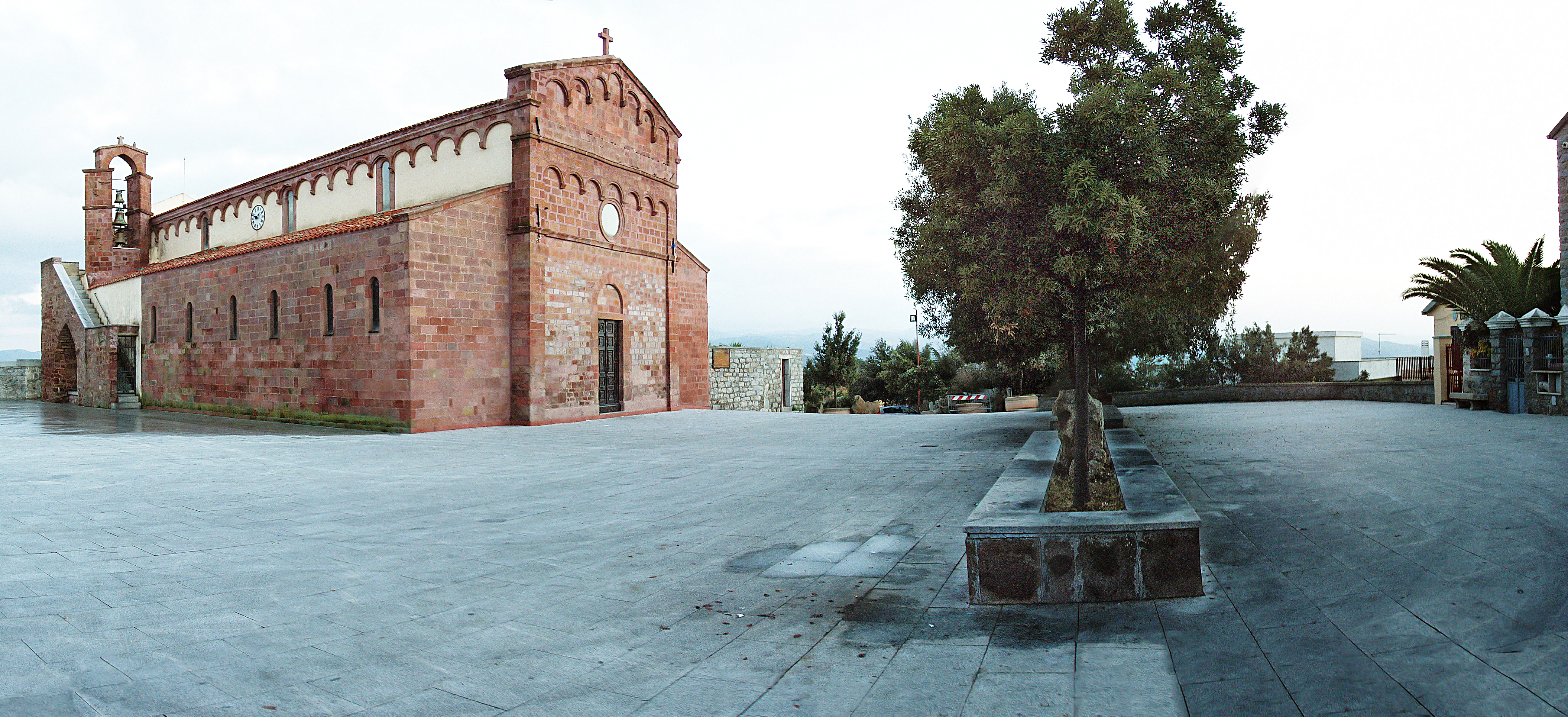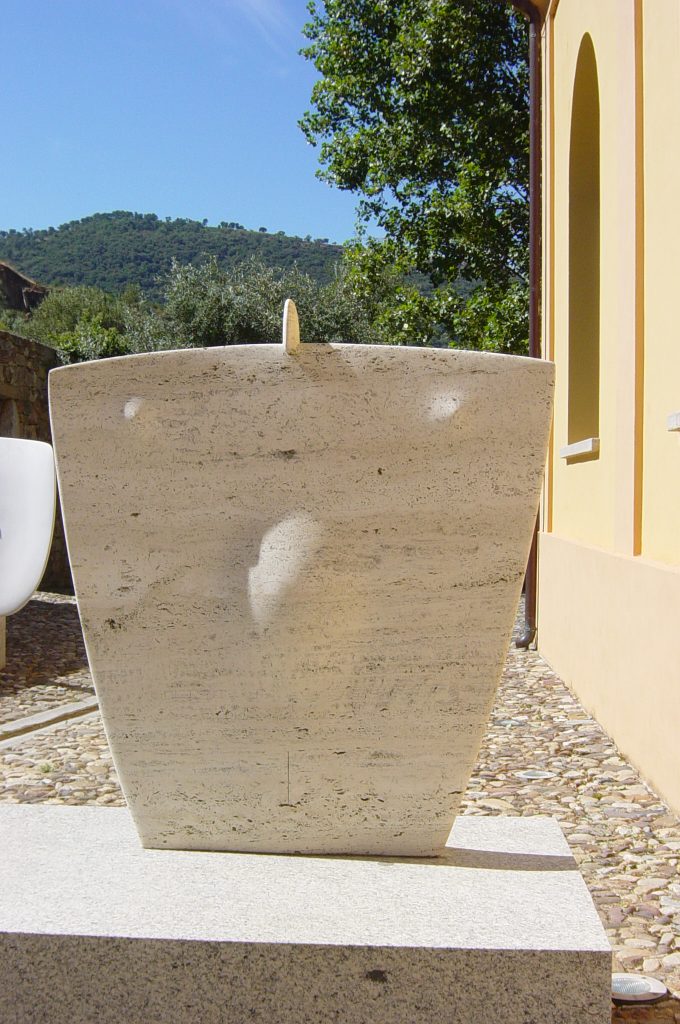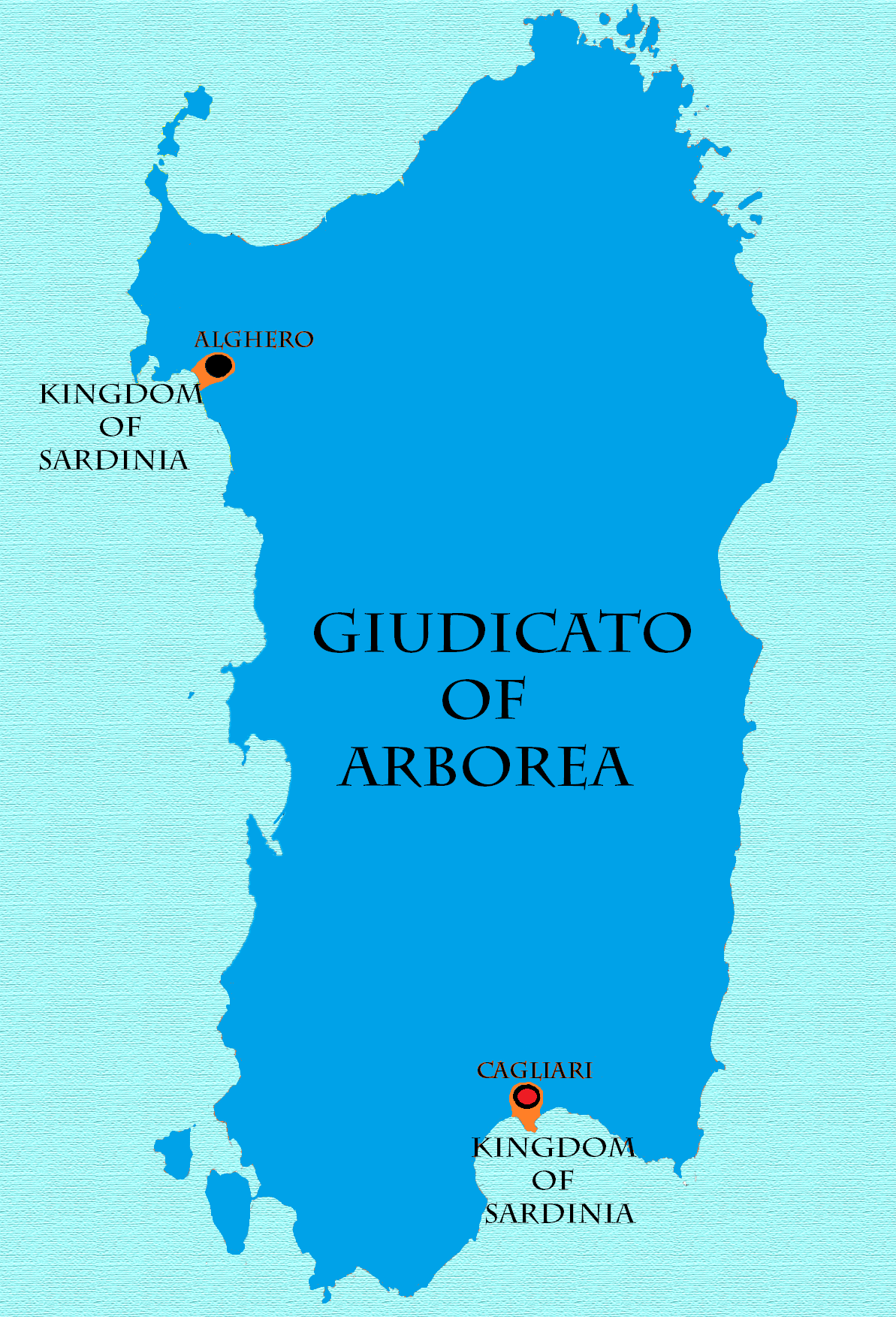|
Orotelli
Orotelli ( sc, Oroteddi) is a ''comune'' (municipality) in the Province of Nuoro in the Italian region Sardinia, located about north of Cagliari and about west of Nuoro. Orotelli borders the following municipalities: Bono, Bottidda, Illorai, Oniferi, Orani. History Human presence in the area is testified as early as the Nuragic period. In the Middle Ages it was part of the Giudicato of Torres and then of that of Arborea, until falling to the Aragonese. Main sights *Parish church of San Giovanni Battista (1116), originally in Romanesque style. It has a 14th-century bell tower with a bas-relief decoration including figures and arcane symbols. *Several nuraghes and Giants' grave Giants' tomb (Italian: '' Tomba dei giganti'', Sardinian: ''Tumba de zigantes'' / ''gigantis'') is the name given by local people and archaeologists to a type of Sardinian megalithic gallery grave built during the Bronze Age by the Nuragic civili ...s References {{authority control Cities ... [...More Info...] [...Related Items...] OR: [Wikipedia] [Google] [Baidu] |
Oniferi
Oniferi ( sc, Onieri) is a ''comune'' (municipality) in the Province of Nuoro in the Italian region Sardinia, located about north of Cagliari and about southwest of Nuoro. Oniferi borders the following municipalities: Benetutti, Bono, Orani, Orotelli. The Oniferi economy is mostly based on animal husbandry Animal husbandry is the branch of agriculture concerned with animals that are raised for meat, fibre, milk, or other products. It includes day-to-day care, selective breeding, and the raising of livestock. Husbandry has a long history, starti .... Sights include several Nuragic and pre-Nuragic archaeological sites, such as the Necropolis of Sas Concas. References Cities and towns in Sardinia {{Sardinia-geo-stub ... [...More Info...] [...Related Items...] OR: [Wikipedia] [Google] [Baidu] |
Orani, Italy
Orani ( sc, Orane) is a ''comune'' (municipality) in the Province of Nuoro in the Italian region Sardinia, located about north of Cagliari and about southwest of Nuoro. As of 31 December 2004, Orani had a population of 3,113 and an area of .All demographics and other statistics: Italian statistical institute Istat. Orani sits at an altitude of 526 meters, at the foot of Mount Gonare, in the heart of the Barbagia region. Among the notable archaeological sites in the area are approximately 30 nuraghi and several “tombs of the giants”. The Sanctuary of Our Lady of Gonare at the crest of the mountain is of particular interest, as is the natural landscape on the road leading up to it. Orani excels in handicrafts. It is famous for its stonework, carpentry, and metalwork, and for tailors specializing in the use of traditional Sardinian velvet. The city is also home to the Nivola Museum. Orani borders the following municipalities: Benetutti, Bolotana, Illorai, Mamoiada, Nuoro, ... [...More Info...] [...Related Items...] OR: [Wikipedia] [Google] [Baidu] |
Bottidda
Bottidda ( sc, Bòtidda) is a ''comune'' (municipality) in the Province of Sassari in the Italian region Sardinia, located about north of Cagliari and about southeast of Sassari. Bottidda borders the following municipalities: Bono, Bonorva, Burgos, Esporlatu, Illorai, Orotelli Orotelli ( sc, Oroteddi) is a ''comune'' (municipality) in the Province of Nuoro in the Italian region Sardinia, located about north of Cagliari and about west of Nuoro. Orotelli borders the following municipalities: Bono, Bottidda, Illorai, O .... References External links Official website Cities and towns in Sardinia {{Sardinia-geo-stub ... [...More Info...] [...Related Items...] OR: [Wikipedia] [Google] [Baidu] |
Illorai
Illorai is a ''comune'' (municipality) in the Province of Sassari in the Italian region Sardinia, located about north of Cagliari and about southeast of Sassari. Illorai borders the following municipalities: Bolotana, Bonorva, Bottidda, Burgos, Esporlatu, Orani Orani, officially the Municipality of Orani ( tl, Bayan ng Orani), is a 1st class municipality in the province of Bataan, Philippines. According to the 2020 census, it has a population of 70,342 people. Geography Orani is from Balanga and n ..., Orotelli. References Cities and towns in Sardinia {{Sardinia-geo-stub ... [...More Info...] [...Related Items...] OR: [Wikipedia] [Google] [Baidu] |
Nuraghe
The nuraghe (, ; plural: Logudorese Sardinian , Campidanese Sardinian , Italian ), or also nurhag in English, is the main type of ancient megalithic edifice found in Sardinia, developed during the Nuragic Age between 1900 and 730 B.C. Today it has come to be the symbol of Sardinia and its distinctive culture known as the Nuragic civilization. More than 7,000 nuraghes have been found, though archeologists believe that originally there were more than 10,000. Etymology According to the ''Oxford English Dictionary'' the etymology is "uncertain and disputed": "The word is perhaps related to the Sardinian place names ''Nurra'', ''Nurri'', ''Nurru'', and to Sardinian ''nurra'' 'heap of stones, cavity in earth' (although these senses are difficult to reconcile). A connection with the Semitic base of Arabic ''nūr'' 'light, fire, etc.' is now generally rejected." The Latin word ''murus'' ('wall') may be related to it, being a result of the derivation: ''murus''–''*muraghe''–n ... [...More Info...] [...Related Items...] OR: [Wikipedia] [Google] [Baidu] |
Romanesque Architecture
Romanesque architecture is an architectural style of medieval Europe characterized by semi-circular arches. There is no consensus for the beginning date of the Romanesque style, with proposals ranging from the 6th to the 11th century, this later date being the most commonly held. In the 12th century it developed into the Gothic style, marked by pointed arches. Examples of Romanesque architecture can be found across the continent, making it the first pan-European architectural style since Imperial Roman architecture. The Romanesque style in England and Sicily is traditionally referred to as Norman architecture. Combining features of ancient Roman and Byzantine buildings and other local traditions, Romanesque architecture is known by its massive quality, thick walls, round arches, sturdy pillars, barrel vaults, large towers and decorative arcading. Each building has clearly defined forms, frequently of very regular, symmetrical plan; the overall appearance is one of simplic ... [...More Info...] [...Related Items...] OR: [Wikipedia] [Google] [Baidu] |
Crown Of Aragon
The Crown of Aragon ( , ) an, Corona d'Aragón ; ca, Corona d'Aragó, , , ; es, Corona de Aragón ; la, Corona Aragonum . was a composite monarchy ruled by one king, originated by the dynastic union of the Kingdom of Aragon and the County of Barcelona and ended as a consequence of the War of the Spanish Succession. At the height of its power in the 14th and 15th centuries, the Crown of Aragon was a thalassocracy controlling a large portion of present-day eastern Spain, parts of what is now southern France, and a Mediterranean empire which included the Balearic Islands, Sicily, Corsica, Sardinia, Malta, Southern Italy (from 1442) and parts of Greece (until 1388). The component realms of the Crown were not united politically except at the level of the king, who ruled over each autonomous polity according to its own laws, raising funds under each tax structure, dealing separately with each ''Corts'' or ''Cortes'', particularly the Kingdom of Aragon, the Principality of Catalonia, ... [...More Info...] [...Related Items...] OR: [Wikipedia] [Google] [Baidu] |
Giudicato Di Arborea
The Judicate of Arborea ( sc, Judicadu de Arbaree, it, Giudicato di Arborea, ) or the Kingdom of Arborea (, , ) was one of the four independent judicates into which the island of Sardinia was divided in the Middle Ages. It occupied the central-west portion of the island, wedged between Logudoro to the north and east, Cagliari to the south and east, and the Mediterranean Sea to the west. To the north east and beyond Logudoro was located Gallura, with which Arborea had far less interaction. Arborea outlasted her neighbours, surviving well into the 15th century. The earliest known judicial seat was Tharros. The Judicate of Arborea at the times of its maximum expansion occupied the whole island's territory, except the cities of Alghero and Cagliari. Origins In the early 9th century, when the Arabs and Berbers of North Africa became aggressive in expansion and piracy, the central authorities of the Byzantine Empire were unable to effectively defend or consistently govern the imper ... [...More Info...] [...Related Items...] OR: [Wikipedia] [Google] [Baidu] |
Giudicato Of Torres
The Judicate of Logudoro or Torres ( sc, Judicadu de Logudoro or ''Torres'', ''Rennu de Logudoro'' or ''Logu de Torres'') was a state in northwest Sardinia from the tenth through the thirteenth century. Its original capital was Porto Torres. The region is still called Logudoro today. In the Middle Ages, Logudoro was one of four kingdoms (''iudicati'') into which the island was divided. The others were Gallura to the east, Arborea to the south, and Cagliari to the southeast. Logudoro was the largest and earliest known of the ''iudicati'' but also the second to be swallowed up by a foreign power. It was divided into twenty ''curatoriae'', ruled by ''curatores''. History In the ninth century, the Arabs and Imazighen followed aggressive policies of expansion and piracy in the Mediterranean. The conquest of Sicily by these groups in 827 effectively cut Sardinia off from the central government and military might of the Byzantine Empire. In the absence of instruction or reinforcement ... [...More Info...] [...Related Items...] OR: [Wikipedia] [Google] [Baidu] |
Nuragic Civilization
The Nuragic civilization, also known as the Nuragic culture, was a civilization or culture on Sardinia (Italy), the second largest island in the Mediterranean Sea, which lasted from the 18th century BC (Middle Bronze Age) (or from the 23rd century BC ) up to the Roman colonization in 238 BC. Others date the culture as lasting at least until the 2nd century AD and in some areas, namely the Barbagia, to the 6th century AD or possibly even to the 11th century AD. The adjective "Nuragic" is neither an autonym nor an ethnonym. It derives from the island's most characteristic monument, the nuraghe, a tower-fortress type of construction the ancient Sardinians built in large numbers starting from about 1800 BC. Today more than 7,000 nuraghes dot the Sardinian landscape. No written records of this civilization have been discovered, apart from a few possible short epigraphic documents belonging to the last stages of the Nuragic civilization. The only written in ... [...More Info...] [...Related Items...] OR: [Wikipedia] [Google] [Baidu] |
Chiesa San Giovanni - Orotelli
Chiesa (Italian, 'church') may refer to: People with the surname *Andrea Chiesa (born 1966), Swiss Formula One racer *Anthony della Chiesa (1394–1459), Italian Dominican friar *Bruno della Chiesa (born 1962), European linguist * Carlo Alberto Dalla Chiesa (1920-1982), Italian military leader *Deborah Chiesa (born 1996), Italian tennis player *Enrico Chiesa (born 1970), Italian footballer **Federico Chiesa (born 1997), Italian footballer, son of Enrico Chiesa *Giacomo della Chiesa (1854-1922), Italian bishop, became Pope Benedict XV *Giulietto Chiesa (1940-2020), Italian journalist and politician *Giulio Chiesa (1928-2010), Italian pole vaulter *Gordon Chiesa, American basketball coach *Guido Chiesa (born 1959), Italian director and screenwriter *Jeffrey S. Chiesa (born 1965), U.S. Senator; American lawyer; former Attorney General of New Jersey *Laura Chiesa (born 1971), Italian fencer *Mario Chiesa (politician) (born c1938), Italian politician *Michael Chiesa (born 1987), America ... [...More Info...] [...Related Items...] OR: [Wikipedia] [Google] [Baidu] |
Sardinia
Sardinia ( ; it, Sardegna, label=Italian, Corsican and Tabarchino ; sc, Sardigna , sdc, Sardhigna; french: Sardaigne; sdn, Saldigna; ca, Sardenya, label=Algherese and Catalan) is the second-largest island in the Mediterranean Sea, after Sicily, and one of the 20 regions of Italy. It is located west of the Italian Peninsula, north of Tunisia and immediately south of the French island of Corsica. It is one of the five Italian regions with some degree of domestic autonomy being granted by a special statute. Its official name, Autonomous Region of Sardinia, is bilingual in Italian and Sardinian: / . It is divided into four provinces and a metropolitan city. The capital of the region of Sardinia — and its largest city — is Cagliari. Sardinia's indigenous language and Algherese Catalan are referred to by both the regional and national law as two of Italy's twelve officially recognized linguistic minorities, albeit gravely endangered, while the regional law provides ... [...More Info...] [...Related Items...] OR: [Wikipedia] [Google] [Baidu] |





